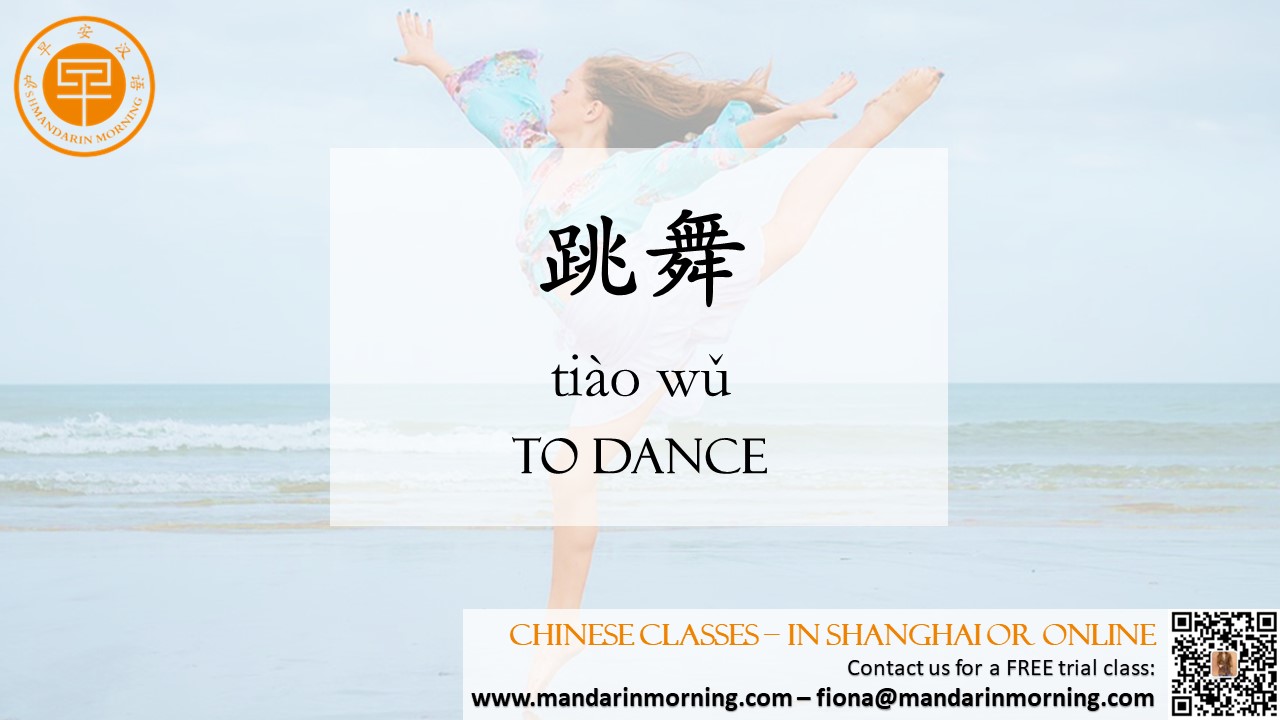【Learn Chinese】Let’s dance: 10 Chinese Dance Words (Part 1) |
| Do you love dancing? Dancing is a special way to share stories and feelings without words. It brings people together, no matter where they’re from. People dance for many reasons: to show their feelings, have fun with friends, feel happy, relax, or clear their minds. In this post, we’ll teach you 10 dance-related Chinese words. You’ll learn to talk about dance with your Chinese friends or dance partners.  Dance 舞 Let’s begin with the Chinese word for “dance” (noun), which is 舞 (wǔ). Originally, the character 舞 depicts a dancer holding two dangling animal skins, symbolizing the art of dance through its form and steps. There’s also the term 舞蹈 (wǔdǎo) for “dance.” Now, you might wonder, what’s the difference between the single-syllable 舞 and the two-syllable 舞蹈? Here’s a simple guide: use 舞, the one-syllable word, when talking about a specific type of dance, like Latin dance or ballet dance. However, when referring to dance in a more general or broad sense, the two-syllable word 舞蹈 is more common. To Dance 跳舞 Next, we have “to dance,” which translates to 跳舞 (tiào wǔ). The first character, 跳, means “to jump,” and 舞, as you just learned, means “dance.” Combined, 跳舞 describes an active kind of dancing! Example: 我喜欢跳舞。 (wǒ xǐhuān tiàowǔ) - I like to dance. Latin Dance 拉丁舞 Moving on, let’s explore some popular types of dance, starting with Latin Dance, known in Mandarin as 拉丁舞 (lādīng wǔ). 拉丁 (lādīng) is the phonetic translation of “Latin,” reflecting its cultural roots, while 舞 (wǔ) means “dance.” Together, 拉丁舞 translates to “Latin dance.” 拉丁舞 is celebrated for its energy and emotion. Originating from Latin America, it blends various dance styles into a dynamic and captivating art form. These dances are renowned for their fun, fast-paced, and sensual nature, making them a favorite among dancers and audiences. Cha-cha Dance 恰恰舞 Continuing our exploration of Latin dance, let’s look at one of its vibrant forms: the cha-cha. In Chinese, this dance is called 恰恰舞 (qiàqià wǔ). The term 恰恰 (qiàqià) phonetically mirrors the sound “cha-cha,” perfectly capturing the dance’s rhythmic and playful essence. The word 舞 (wǔ) means “dance,” so together, 恰恰舞 is the Chinese expression for “cha-cha dance.” The cha-cha originated in Cuba in the late 1940s and quickly became a worldwide sensation. It’s distinguished by its catchy rhythm, featuring a quick three-step shuffle in sync with the lively music tempo. Today, 恰恰舞 is celebrated globally in dance competitions, renowned for its dynamic steps and the joyful, spirited atmosphere on the dance floor. Tango Dance 探戈舞 Continuing our exploration of Latin dance, we come to the Tango, which is called 探戈舞 (tàngē wǔ) in Chinese. The term 探戈 (tàngē) is the phonetic adaptation of “Tango,” while 舞 (wǔ) means “dance.” Originating in the late 19th century along the Rio de la Plata, the natural border between Argentina and Uruguay, the Tango is a dance rich in passion. It’s known for its dramatic movements and the close embrace of its partners. More than just a dance, the Tango is a language of romance and intensity, conveying stories through its powerful and expressive steps. |